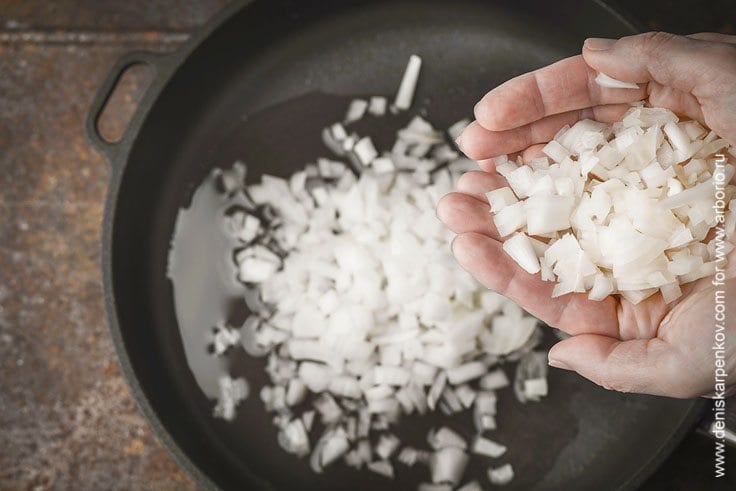Contents
Various cooking secrets, as a rule, are not secrets at all: these are observations that are based on a deep understanding of the processes taking place in the kitchen. For example, you should think about frying spices in a dry frying pan, which enhances their aroma, and you will realize that there is nothing strange and illogical in it.
But besides the tricky culinary tricks that are based on logic, there are really counter-intuitive kitchen life hacks. They are a minority, but they are unexpected, and sometimes completely contradictory, which does not negate one simple fact: they work. Today we are talking about just such culinary secrets – unexpected and wild ones that can improve your cooking where you would not even guess.
If you have other examples of such culinary tricks, be sure to write them in the comments, it is very interesting.


Add salt to sweet foods
There is not a single sweet dish, from desserts and jams to ice cream and sweet pastries, that cannot be improved by adding a homeopathic dose of salt. We used to think of salt as a spice for savory dishes, such as soups and hot dishes, and if you ask your friend which of the basic tastes, in his opinion, sodium chloride enhances, he will look at you in surprise: of course, salty! far from being so straightforward.
Yes, salt is the carrier of the salty taste, but besides this, it interacts with the rest of the flavors that the dish carries. So, in small amounts, salt suppresses bitter, while enhancing tastes such as sweet, sour and umami – which is why the taste of your dessert prepared with a pinch of salt will seem bulkier and richer. But don’t overdo it: a little more salt, and it will start to suppress the sweet taste instead of intensifying it.
Pour onion with water for light frying
Frying onions in hot oil until soft is a culinary technique familiar to many cuisines and peoples. Typically, chopped or chopped onions are added to hot oil and fried, stirring occasionally, to soften and translucent but not burn: in most cases, we do not want the onions to change their color and become tough, so you have to keep an eye on what is happening. in a pan, interfering with the process from time to time.




Collect all liquid that comes out of vegetables
It is believed that the less water a product contains, the more concentrated its taste will be – and this is true. For example, baked peppers are delicious not only because they soften and acquire the aroma of a fire, but also because during the baking process they release moisture, which makes their taste more intense. So this moisture is our enemy? This moisture is not just water without taste, color, and smell, but vegetable juice, which means that it is also a carrier of taste, albeit not so intense.
After collecting the liquid that has flowed out of baked peppers, or salted tomatoes, or any other vegetables, you will get a flavor concentrate – you just need to figure out where to use it (options – add to soup, use for boiling broth, make sauce or marinade). The same applies to juices that flow out of meat and fish during defrosting or after cooking – they also have the right to a second life.
Don’t ignore the microwave
Advanced cooks treat the microwave with a slight disdain, and in some ways it is justified: you do not need to be a certified taster to distinguish a dish heated in the microwave from a freshly prepared one, and the comparison will always not be in favor of the former. We are so convinced that nothing good can be expected from a microwave that we voluntarily ignore the many uses where it can be useful. How can you cook corn in 5 minutes? Bringing candied honey back to life?
Ideal to fry bacon or dry greens quickly? I’m not talking about such banal things as preparing onions for cutting without tears, quickly peeling garlic or softening citrus fruits to squeeze more juice out of them.


Collect leftover sauce from the sides of the dishes
You made a sauce, be it pesto, mayonnaise, or tomato sauce, and put it in a container for storage or serving, and the bowl, frying pan, and other utensils that you used to make the sauce were sent to the sink. Sound familiar? Have you ever wondered how much sauce is wasted at the same time, remaining on the walls of dirty dishes? The paradox is that the less sauce you cook, the more you throw away, and I usually cook everything in two portions.
At some point, I began to get bored with it, but the solution was found by itself: a silicone spatula. Nothing new, it is often used to collect pastry cream or whipped cream, but when it comes to sauces or, say, cream soups, it is just as useful. Collect leftover sauce from the walls of the frying pan, bowl, blender bowl, sinker, spoons and other utensils that will go to the sink almost clean – and you won’t have to regret throwing away valuable food.










